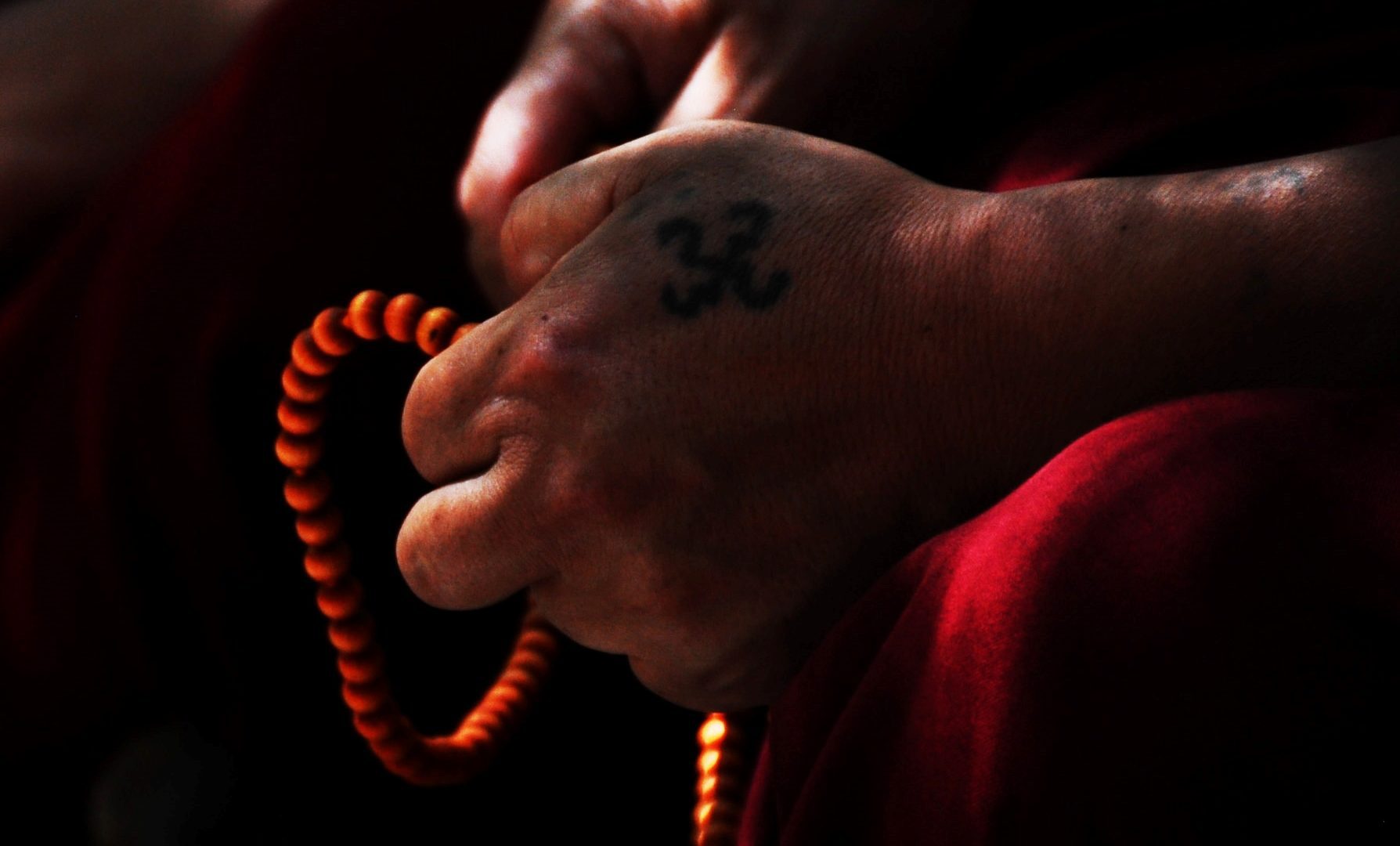Paper written by Tenzin Dakpa from the Tibetan Psychological Association
Birth of Modern Psychology
In contrast to human physiology, psychology is a relatively young science with an experimental root in the 19th century. Until then, anyone interested in exploring the mind did so in a philosophical context. There are generally two men credited for establishing the field of psychology in the 19th century, William James and Wilhelm Wundt.
Before the establishment of modern psychology, philosophers did consider questions about the mind. Wundt and James, however, contributed to the development of psychology as a separate scientific discipline. Wundt was a structuralist, a school of thought that argues our cognitive experiences can best be understood by breaking them into their parts. In doing so, he proposed the method of introspection. William James was the first American psychologist and a proponent of functionalism. This perspective specifically focuses on how mental activities serve as an adaptive response to an organism’s environment. In parallel to Wundt, James emphasized introspection; however, In addition to introspection, James used more objective measures, including using various recording devices and examining practical products of mental activities as well as anatomy and physiology.
Care for the mentally ill was non-existent in early 19th century America: the afflicted were either confined to prisons or almshouses, or they were under inadequate supervision by families. The first state hospitals for mental disorders were built in New Jersey and Pennsylvania, and from then on mental illness was probed, analyzed, and “cure” recommendations were made by both the scientific and lay communities[3].
We have come a long way in our understanding and study of the mind since then. In spite of a large and growing scientific body of literature on mental health and trauma, many psychologists continue to have a cursory understanding of this field and lack formal training in trauma-related disorders or evidence-based psychosocial treatments. There is, therefore, a clear need for the development and dissemination of a comprehensive model of trauma-focused, empirically informed competencies like knowledge, skills, and attitudes.
Mental Health in two distinct cultures
American Psychological Association defines mental health as “a state of mind characterized by emotional well-being, good behavioural adjustment, relative freedom from anxiety and disabling symptoms, and a capacity to establish constructive relationships and cope with the ordinary demands and stresses of life”[5], meaning that any condition involving cognitive and emotional disturbances, abnormal behaviours, impaired functioning, or overlapping of these result in mental disorders.
Buddhism provides a different and effective way to treat the mind than meditation alone; it provides a path to the insight one might expect to gain through psychotherapy, such as increased self-awareness, a greater understanding of life itself, and a more meaningful and grateful life. Based on Buddhist psychology and Buddhist philosophy, mental disorders are the result of a self-centred attitude with attachments and ignorance of the world. In the end, this clinging nature causes confusion in the mind, which is the source of all suffering and disease. In fact, both physical and mental disturbances are believed to be rooted in the three fundamental causes “mental factors” (Tib. nyon mongs/ཉོན་མོངས་གསུམ།) of the Buddhist tradition: delusion (Tib. gti mug/གཏི་མུག།); attachment (Tib.’dod chags/འདོད་ཆགས། ), and aversion (Tib. zhe sdang/ཞེ་སྡང།).
Existence of Mental Disorder in Tibetan community
When we talk about the suffering Tibetans have had to endure as a result of the Chinese invasion and occupation of Tibet, the focus has predominantly been on physical abuse and loss of statehood, and not so much on mental health, especially what they have experienced over the last seventy years. A study by Fordham University’s Department of Psychology concluded “Distress increased significantly with greater trauma exposure. However, despite a high prevalence of potentially traumatizing events, levels of psychological distress were extremely low”[2].
Cultural sensitivity is one barrier to meaningful, accurate research design and data collection, especially in this age when the world is more connected than ever. There are numerous blind spots and potential biases that come into play when researchers conduct interviews or studies without knowing the participant’s cultural background and language, and that too when they use the same theories and methods uniformly across all cultures. This can be compared to the Army Beta intelligence test from World War I. Army Beta was developed by the American Psychological Association (APA) Committee on the Psychological Examination of Recruits under the leadership of Robert Yerkes in 1916. In order to determine who was eligible for special assignments and officer-training schools, it was given to non-English speaking and/or illiterate Army recruits. For that Stephen Jay Gould argued that “the preconceived beliefs and biases of scientists influence their methods and conclusions.’’
In an article entitled “Tibetan Buddhism and Research Psychology: A match made in heaven?”[1], the cultural differences and language barrier can be a road to change the whole content because “It’s a big challenge for Western researchers to figure out how these ideas might be used without losing too much in translation,” (Rude, 2003). Professor Rude’s comment completely resonates with me. There are cultural and linguistic differences, for instance, there would be differences in interpretation of the same word in different cultures. Due to cultural customs and value systems, Tibetans may not feel comfortable speaking freely about everything they are going through. For the reasons I mentioned earlier, although I respect and appreciate the experts who came to India to study Tibetans and their mental health, I do disagree to some extent concerning the methods used and conclusions in these studies.
For Tibetans, Buddhist practice is sometimes considered an effective way of coping with mental health problems, but I highly doubt the above researcher’s conclusion that Tibetans are immune to PTSD or mental disorders. Despite influences from Buddhist philosophy, Buddhist psychology, and Buddhist science, the incidences of suicide and substance abuse among Tibetan youth are on the rise. According to Central Tibetan Administration’s Mental Health Desk, there are 125 mental health patients and 68 neurological disorders and epilepsy in 23 Tibetan settlements[4].
Tibet’s first-generation in exile (our grandparents’ generation) have been violently removed from their land, livelihood and lifestyles. In the face of this extreme trauma, this generation found themselves in new countries, and new societies and had to quickly adapt to new ways of being, and rebuild their lives from the ground up. Not to mention bullying, discrimination, ignored, fear, loss and anxiety at being separated from their relatives and family members, deprived of basic rights, forced to move to different countries, and systematically oppressed since 1959. Many first-generation refugees witnessed their spouses, parents and teachers being tortured, abused and murdered, and have gone through war, immigration, substance abuse, PTSD, and unemployment, to name a few.
The generation prior to us experienced forced migration, acculturation stress, discrimination, language barriers, sexism, aggression, and emotional avoidance.
Those of us born in Tibet and brought up in India, or Tibetans born in India, have seen everything that can trigger mental health issues, which is why we see so many Tibetans who have PTSD, anxiety, burnout, toxic and emotionally abusive relationships, minority stress, eating disorders, perfectionism, and unreasonable expectations. Intergenerational trauma manifests in these and many other subtle ways in the lives of the younger Tibetan refugees.
Psychology in Tibetan Diaspora
Like in many cultures, mental hygiene and psychology have long been viewed as important in Tibetan culture, especially by elders, who often use the phrase (Tib. Sempa skyid po byos/སེམས་པ་སྐྱིད་པོ་བྱོས།) meaning “Be happy.” However, people rarely talk about clinical disorders like down syndrome and autism. Also, some psychological terms in the Tibetan language are very problematic, but it goes without saying that the Tibetan mental health approach is distinct from Western psychotherapy.
Based on the Buddhist concept of mind and its understanding, Tibetan mental health approaches the study of the mind from a Buddhist perspective. In particular, it examines the mind and mental health from a purely philosophical and spiritual standpoint.
Mental delusions are considered spirits and demons in Buddhist philosophy. Their occurrence is caused by a misunderstanding of the mind on the part of the mind itself. Thus, the fundamental point is that those suffering from mental disorders get lost in illusions and interpret them incorrectly or as reality.
Most likely, the first-ever meeting between Tibetan Buddhists and science took place in 1987 with the participation of Tenzin Gyatso, H.H. the 14th Dalai Lama, a global advocate for compassion; Francisco Varela, a scientist and philosopher; and Adam Engle, a lawyer and entrepreneur. To find common ground and meaningful dialogue between the two and to promote human well-being, the trio founded the Mind & Life Institute. The Mind and Life Institute organized the first dialogue, “Dialogues Between Buddhism and the Cognitive Sciences on October 23-29, 1987.”. Since then the institute has organized 37 dialogues on various topics, all related in one or another to the functioning of the mind.
I also got an opportunity to attend a few seminars, and I agree with Dr. Richard Davidson’s comment that “interdisciplinary understanding between Western psychology and Tibetan Buddhism–not just borrowing concepts–can be beneficial to both traditions”[1].
Tibetan society today and the emergence of young psychologists.
Seeing a need to introduce and understand both Tibetan and Buddhist approaches to psychology and mental health, we a group of students founded the Tibetan Psychological Association on 8th April 2022. Subsequently, we organized a Mind and Mental Health conference from 8th – 10th April 2022. It was funded by the Tibet Fund in collaboration with the Mental Health Desk of the Central Tibetan Administration, and Delhi-based NGO Empowering the Vision.
This conference was attended by people from various professions and diverse age groups. We witnessed the presence of students at varying levels of education based in the field of psychology, as well as a few people who are working in the field as counsellors.
The Tibetan Psychological Association was started with an aim to create a network among young Tibetans who are studying in different fields of psychology, to have a platform where they can organize seminars, workshops, and training in the Tibetan community, and help each other for research and other resources. Additionally, using this platform we can create a bridge between Buddhist and Western psychology.
Despite different approaches and methods, mental hygiene is as important as physical health. Nobody should be denied access to mental health care because of their financial or socioeconomic status. Nobody should be treated differently because of how they were born – beliefs can be different, approaches can be different – but a healthy mind is what we all want.
References
- Dingfelder , S. F. (2003, December 3). Tibetan Buddhism and research psychology: a match made in Nirvana? American Psychological Association. Retrieved May 3, 2022, from https://www.apa.org/monitor/dec03/tibetan
- Keller, A. (n.d.). Entering exile: trauma, mental health, and coping among Tibetan refugees arriving in Dharamsala, India. PubMed. Retrieved May 4, 2022, from https://pubmed.ncbi.nlm.nih.gov/18404641/#affiliation-1
- Mental Health. (2019, July 1). The University of Toledo. Retrieved May 11, 2022, from https://www.utoledo.edu/library/canaday/exhibits/quackery/quack5.html
- Outlook on Mental Health in Tibetan Community (Season first, Episode first) [TV series episode]. (2022, April 30). In Voice Of Tibet (Executive Producer), Mental health session. YouTube. https://youtu.be/LI9RzbKempk (Original work published 2022)
- Psychology. (n.d.). APA Dictionary of Psychology. Retrieved May 9, 2022, from https://dictionary.apa.org/mental-health
- Tibetan Buddhist Psychology and Psychiatry – TME. (n.d.). Tibetan Medicine Education Center. Retrieved May 3, 2022, from Tibetan Buddhist Psychology and Psychiatry – TME – Tibetan Medicine Education Center
- The Mismeasure of Man. W. W. Norton; New York, NY, USA: 1981.
- Warne, R. T., Burton, J. Z., Gibbons, A., & Melendez, D. A. (2019). Stephen Jay Gould’s Analysis of the Army Beta Test in The Mismeasure of Man: Distortions and Misconceptions Regarding a Pioneering Mental Test. Journal of Intelligence, 7(1), 6. https://doi.org/10.3390/jintelligence7010006
- 1987 Mind & Life Dialogue I. (n.d.). Mind & Life Institute. Retrieved May 4, 2022, from https://www.mindandlife.org/event/1987-mind-and-life-dialogue-i/


